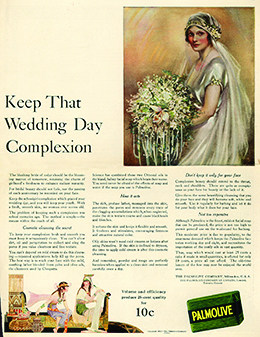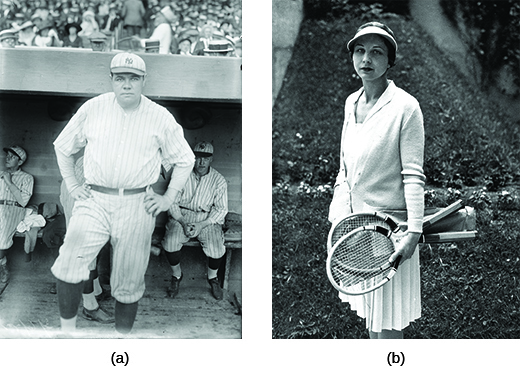| << Chapter < Page | Chapter >> Page > |
Despite the fact that the promise of more leisure time went largely unfulfilled, the lure of technology as the gateway to a more relaxed lifestyle endured. This enduring dream was a testament to the influence of another growing industry: advertising. The mass consumption of cars, household appliances, ready-to-wear clothing, and processed foods depended heavily on the work of advertisers. Magazines like Ladies’ Home Journal and The Saturday Evening Post became vehicles to connect advertisers with middle-class consumers. Colorful and occasionally provocative print advertisements decorated the pages of these publications and became a staple in American popular culture ( [link] ).

The form of the advertisements, however, was not new. These colorful print ads were merely the modern incarnations of an advertising strategy that went back to the nineteenth century. The new medium for advertisers in the 1920s, the one that would reach out to consumers in radically new and innovative ways, was radio.
After being introduced during World War I, radios became a common feature in American homes of the 1920s. Hundreds of radio stations popped up over the decade. These stations developed and broadcasted news, serial stories, and political speeches. Much like print media, advertising space was interspersed with entertainment. Yet, unlike magazines and newspapers, advertisers did not have to depend on the active participation of consumers: Advertisers could reach out to anyone within listening distance of the radio. On the other hand, their broader audience meant that they had to be more conservative and careful not to offend anyone.

Listen to a recording of a broadcast of the “WLS Showboat: “The Floating Palace of Wonder,” a variety show from WLS Chicago, a radio station run by Sears Roebuck and Co. What does the clip tell you about the entertainment of the 1920s?
The power of radio further sped up the processes of nationalization and homogenization that were previously begun with the wide distribution of newspapers made possible by railroads and telegraphs. Far more effectively than these print media, however, radio created and pumped out American culture onto the airwaves and into the homes of families around the country. Syndicated radio programs like Amos ‘n’ Andy , which began in the late 1920s, entertained listeners around the country—in the case of the popular Amos ‘n’ Andy , it did so with racial stereotypes about African Americans familiar from minstrel shows of the previous century. No longer were small corners of the country separated by their access to information. With the radio, Americans from coast to coast could listen to exactly the same programming. This had the effect of smoothing out regional differences in dialect, language, music, and even consumer taste.
Radio also transformed how Americans enjoyed sports. The introduction of play-by-play descriptions of sporting events broadcast over the radio brought sports entertainment right into the homes of millions. Radio also helped to popularize sports figures and their accomplishments. Jim Thorpe, who grew up in the Sac and Fox Nation in Oklahoma, was known as one of the best athletes in the world: He medaled in the 1912 Olympic Games, played Major League Baseball, and was one of the founding members of the National Football League. Other sports superstars were soon household names. In 1926, Gertrude Ederle became the first woman to swim the English Channel. Helen Wills dominated women’s tennis, winning Wimbledon eight times in the late 1920s ( [link] ), whereas “Big Bill” Tilden won the national singles title every year from 1920 to 1925. In football, Harold “Red” Grange played for the University of Illinois, averaging over ten yards per carry during his college career. The biggest star of all was the “Sultan of Swat,” Babe Ruth, who became America’s first baseball hero ( [link] ). He changed the game of baseball from a low-scoring one dominated by pitchers to one where his hitting became famous. By 1923, most pitchers intentionally walked him. In 1924, he hit sixty homeruns.

For many middle-class Americans, the 1920s was a decade of unprecedented prosperity. Rising earnings generated more disposable income for the consumption of entertainment, leisure, and consumer goods. This new wealth coincided with and fueled technological innovations, resulting in the booming popularity of entertainments like movies, sports, and radio programs. Henry Ford’s advances in assembly-line efficiency created a truly affordable automobile, making car ownership a possibility for many Americans. Advertising became as big an industry as the manufactured goods that advertisers represented, and many families relied on new forms of credit to increase their consumption levels and strive for a new American standard of living.

Notification Switch
Would you like to follow the 'U.s. history' conversation and receive update notifications?